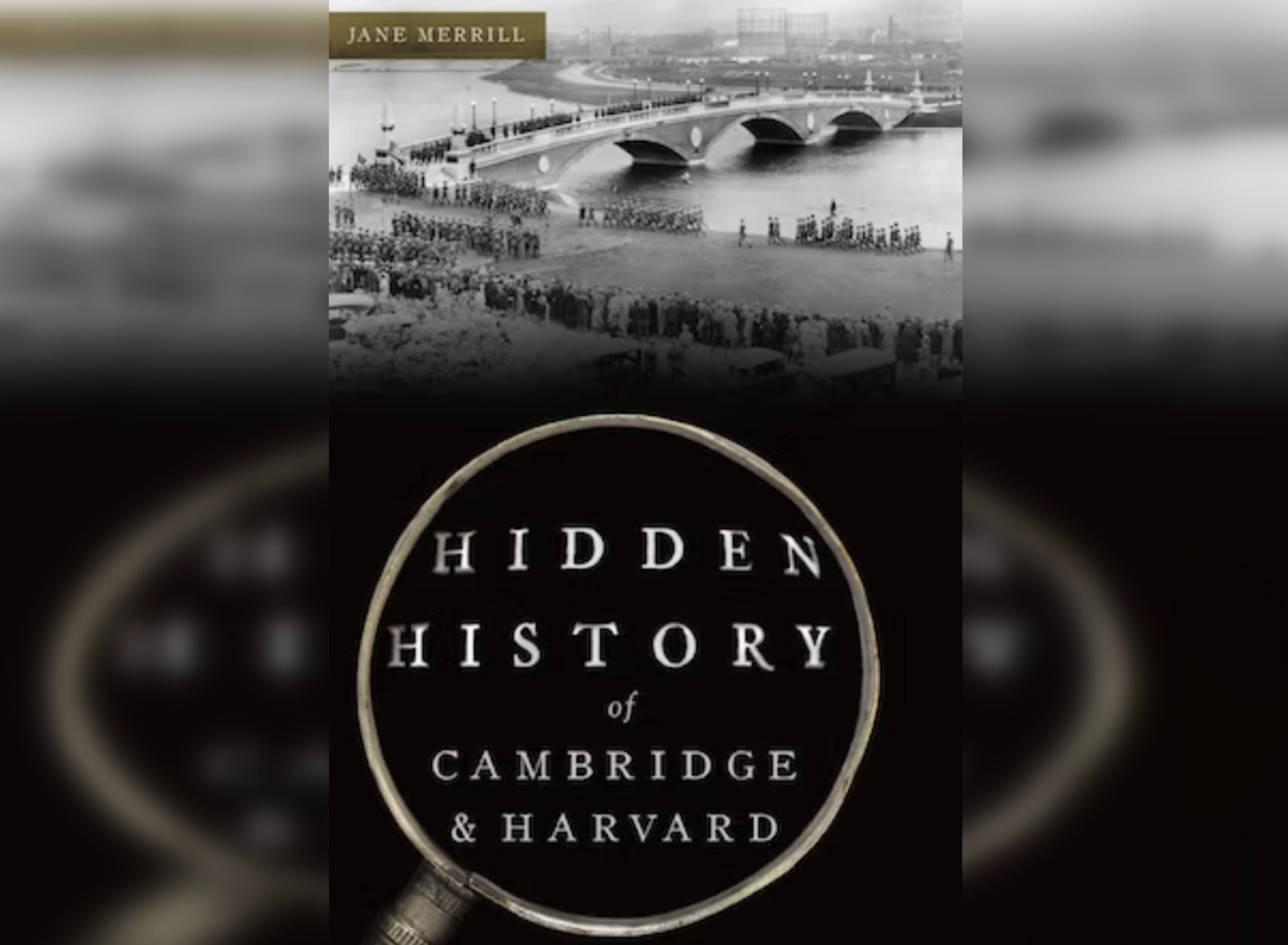
News
Progressive Labor Party Organizes Solidarity March With Harvard Yard Encampment

News
Encampment Protesters Briefly Raise 3 Palestinian Flags Over Harvard Yard

News
Mayor Wu Cancels Harvard Event After Affinity Groups Withdraw Over Emerson Encampment Police Response

News
Harvard Yard To Remain Indefinitely Closed Amid Encampment

News
HUPD Chief Says Harvard Yard Encampment is Peaceful, Defends Students’ Right to Protest
‘Hidden History of Cambridge & Harvard’ Review: A Deep-Dive Into All Things Cambridge
3.5 Stars

Since its 1630 founding to the intricate details of the city today, Jane Merrill’s most recent publication leaves no stone unturned when chronicling Cambridge, Massachusetts, and Harvard University’s growth throughout the ages. Although the seemingly arbitrary selection of topics and details may fail to captivate readers for the book’s entire length, the book as a whole accurately reflects the multi-dimensionality of history and life in Cambridge.
Merrill splits the book into four parts: “Early Years,” “Becoming the United States,” “The Nineteenth Century,” and “Modern Times.” From there, each of the four parts covers a myriad of topics, from the expected (the founding of Cambridge, Harvard’s presidents, and historic events) to the perhaps not-so-expected (food fights, candy factories, and school pranks).
For instance, Merrill predictably tells of how Widener Library is not just home to the beautiful West Reading Room but also a grieving mother's tribute to her son, Harry, who passed away on the Titanic. At the same time, she entertains her readers with an account of the 1818 student protest over the quality of the food being served in Annenberg — one of Harvard College’s dining halls — which makes the food being served there today seem not nearly as bad. The depictions of these events are admirably detailed with precise dates, first-hand accounts, and photographs from sources such as the Harvard University Archives and the Peabody Museum, ultimately crafting a vivid picture of events long in the past.
Readers who have taken an American history class may appreciate the re-telling of national history from a nuanced, Cambridge perspective. For example, Merrill tells stories of George Washington's brief stay in Cambridge during the American Revolution, and how a group of Harvard faculty and students enlisted in the Civil War. There are even references to slightly more obscure pieces of American history, such as when Merrill writes about Professor Henry Wadsworth Longfellow, one of the premier Fireside Poets, and William Randolph Hearst, a former undergraduate student whose later use of yellow journalism held national influence.
At times, however, the ordering and inclusion of certain events felt confusing. Why is there a section about America’s origin of using Christmas trees sandwiched between “General and Mrs. Washington” and “Student Life”? Why is it necessary to know that a large Marilyn Monroe poster hung by an unnamed graduate student had to be taken down? Merrill risks losing the readers’ attention by not adhering to a strict chronological order with smooth transitions between topics. But although these few moments in the book may seem confusing when read individually, Merrill’s interspersion of these lesser-known facts with stereotypical historical topics gives the retelling of Harvard’s history a personalized quality.
Merrill’s commitment to writing with historical depth is an admirable aspect of her book. She is extremely transparent about Cambridge and Harvard’s legacy of slavery, oppression of indigenous people, and racism. Although rarely the focal point of any given section, Merrill does not shy away from the fact that Cambridge and Harvard were built on the labor and oppression of marginalized groups. Rather, she acknowledges darker sides to the city’s history; indeed, readers may be taken aback when learning that slave plantation owners resided in Cambridge, as well as that former Harvard University President Abbott Lawrence Lowell's alleged association with Harvard's Ku Klux Klan chapter, established during his presidential term.
Despite the superfluous amount of details, Merrill successfully uses “Hidden History of Cambridge & Harvard” to encourage readers to consider their surroundings through the lens of history. By unearthing the lesser-known history of the city and world-renowned university, Merrill lays the foundation — what remains is for the readers to open their eyes and build an appreciation of the history that exists all around them.
Want to keep up with breaking news? Subscribe to our email newsletter.
